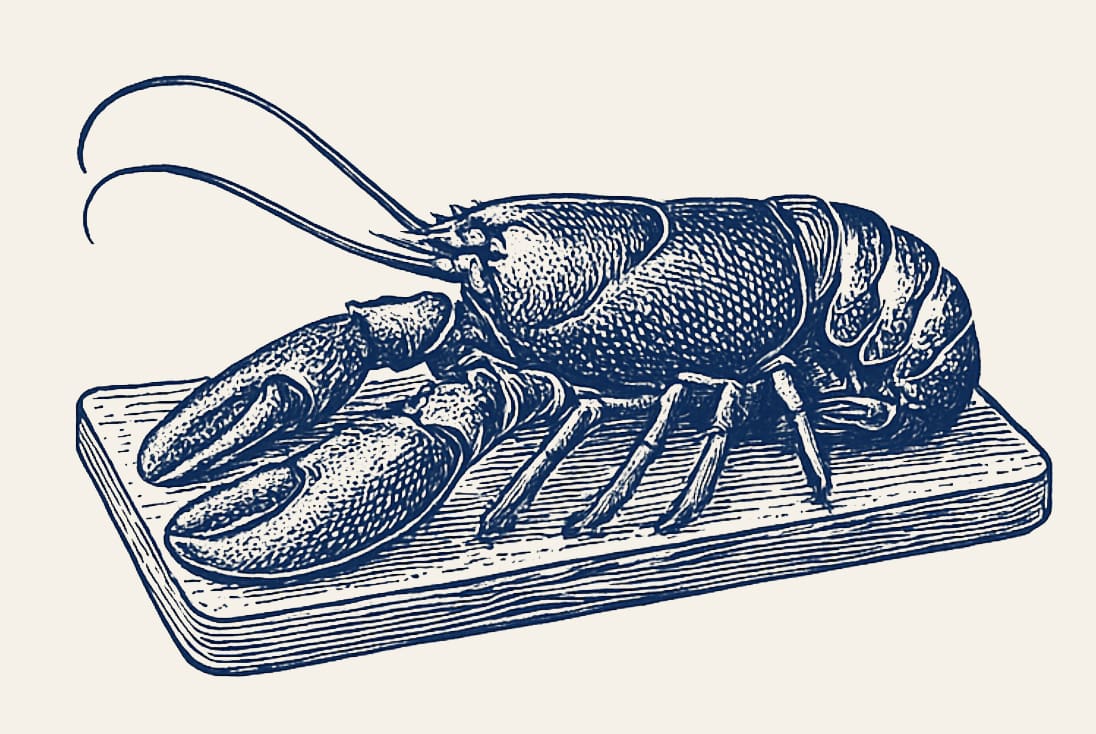
How to Prepare Lobster at Home – A Step-by-Step Guide
|
|
Time to read 4 min

|
|
Time to read 4 min
Ever wanted to prepare lobster at home but didn’t know where to start? You’re not alone. Many people are intimidated by this luxurious shellfish, but with a few simple steps, you can master the art of dressing a lobster in your own kitchen. In this easy-to-follow guide, we’ll show you exactly how to dress a lobster, from cracking claws to plating like a pro. Whether you’re planning a seaside supper or a special dinner at home, this is your go-to step-by-step lobster prep guide.
A cooked lobster (whole, chilled or freshly boiled)
A large chopping board
A sharp knife or kitchen scissors
A lobster cracker (or nutcracker)
A seafood pick or skewer
Kitchen towel or tea towel (things get slippery!)
Place your cooked lobster belly-down on a large chopping board. If it’s been chilled, let it come to room temperature for a few minutes. This makes it easier to handle (and a little less icy on the fingers).
Hold the body firmly and twist the claws off at the joints. You should end up with two large claws and two knuckle sections. Set them aside.
Hold the lobster’s body in one hand and the tail in the other. Twist gently—it should come away in one firm motion. Set the tail aside.
Now you’re left with the central body (the part between the claws and tail). Crack it open gently to access the small bits of meat inside. You’ll find delicious morsels in the head and around the legs—use a pick or skewer to ease them out.
Use your cracker to break the shell and extract the claw meat in one piece if possible (it’s the showstopper!). The knuckles hold tender meat too, so don’t skip them.
Lay the tail on its back and use kitchen scissors to snip down each side of the shell. Peel it back to reveal a beautiful piece of lobster meat. Check for and remove the dark vein that runs along the top—it’s edible but doesn't look great!
Slice the tail into medallions and arrange in a fan.
Place the claw meat at the top of the plate for drama.
Use the knuckle meat to fill in gaps or make a mini lobster salad.
Serve with a wedge of lemon, a drizzle of melted butter, or a dollop of homemade mayo.
Perfect with a chilled glass of white wine and a sea breeze (or at least a candle that smells like one).
Don’t bin the shells! Use them to make a quick lobster stock—perfect for our seafood chowder recipe.

20 minutes
30 minutes
4-6
Starter or Main Course
Cornwall
2 tbsp butter
1 tbsp olive oil
1 onion, finely chopped
1 leek, thinly sliced
2 sticks celery, finely diced
2 medium potatoes, peeled & cubed
2 cloves garlic, minced
1 bay leaf
1 tsp fresh thyme or ½ tsp dried
750ml fish or vegetable stock
150ml whole milk
150ml double cream
200g cooked white fish (e.g. cod or haddock), flaked
200g cooked lobster meat, chopped (claw & tail)
Optional: 100g cooked prawns or mussels
Salt & freshly ground black pepper
Fresh parsley or dill to garnish
Crusty bread or soda bread, to serve
A splash of dry white wine and a pinch of smoked paprika or cayenne for a little extra depth.
Start with the base:
Melt the butter and olive oil in a large saucepan. Add the onion, leek, and celery with a pinch of salt. Cook over low heat for about 8–10 minutes until soft but not browned.
Add garlic and potatoes:
Stir in the garlic, thyme, bay leaf and potatoes. Cook for a few minutes, then pour in the stock (and wine, if using). Simmer gently for 10–12 minutes until the potatoes are tender.
Bring the creaminess:
Add the milk and double cream. Gently fold in the cooked fish and lobster (and prawns or mussels if using). Simmer on a very low heat for 5 minutes to warm through—don’t boil.
Season & serve:
Season well with salt, pepper, and a little smoked paprika if you like. Ladle into warm bowls, scatter with fresh parsley or dill, and serve with warm crusty bread.
Cream Cornwall tip:
Serve your chowder in a deep bowl or even better a Cream Cornwall bowl with our beautiful Lobster illustration on it.
Cornish lobster is considered some of the best in the world—prized for its sweet, delicate flavour and firm texture. Caught sustainably off the rugged Cornish coast, these lobsters thrive in the cold, clean waters of the Atlantic, which helps develop their flavour and vibrant blue shells (before they’re cooked, of course).
Choosing Cornish lobster not only supports local fishermen, but also means you’re getting a fresher, more responsibly sourced ingredient. Whether you’re dressing it simply with lemon and butter, or making something more elaborate, Cornish lobster always feels like a bit of a celebration on a plate.
So if you've ever fancied a go, give it a try!
We hope this is useful! Please watch the video as well as it really helps!
Rebecca & Allison x




